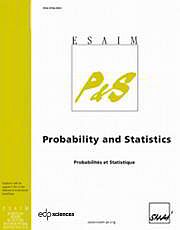Crossref Citations
This article has been cited by the following publications. This list is generated based on data provided by Crossref.
Amsalu, Saba
Matzinger, Heinrich
and
Vachkovskaia, Marina
2008.
Thermodynamical Approach to the Longest Common Subsequence Problem.
Journal of Statistical Physics,
Vol. 131,
Issue. 6,
p.
1103.
Lember, Jüri
and
Matzinger, Heinrich
2009.
Standard deviation of the longest common subsequence.
The Annals of Probability,
Vol. 37,
Issue. 3,
Lember, Jüri
Matzinger, Heinrich
and
Vollmer, Anna
2014.
Optimal alignments of longest common subsequences and their path properties.
Bernoulli,
Vol. 20,
Issue. 3,


